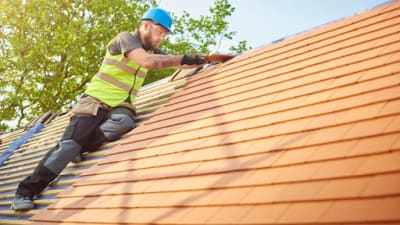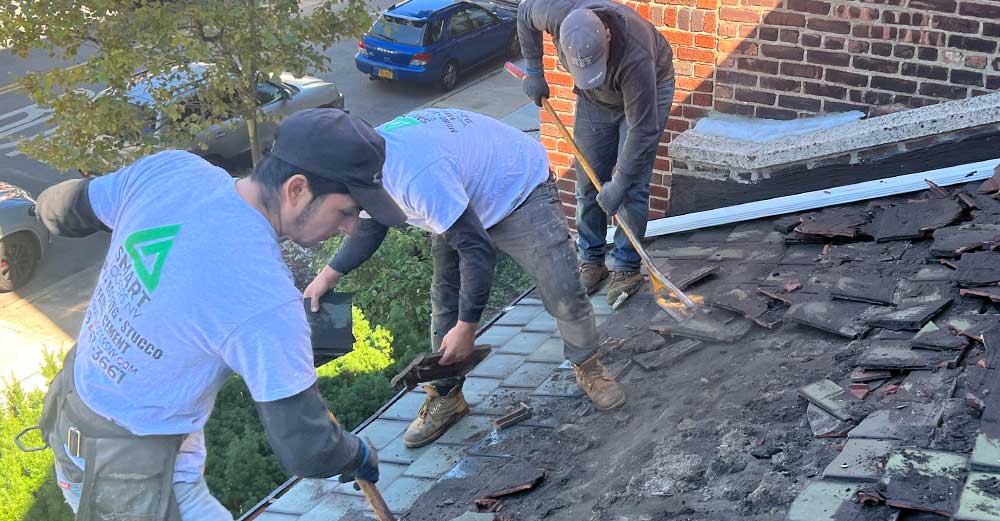Roof Repair Oahu: Quick and Affordable Roof Repairs Near You
Roof Repair Oahu: Quick and Affordable Roof Repairs Near You
Blog Article
Comprehending the Different Types of Roofing Systems: A Comprehensive Guide for Homeowners
In the world of homeownership, picking the proper roof covering design is a choice that lugs significant implications for both functionality and aesthetic appeal. With a selection of alternatives-- varying from the traditional gable to the modern level-- each kind presents unique advantages and challenges that must align with the property owner's particular needs and environmental factors to consider. Comprehending these distinctions not just help in making an enlightened selection however likewise influences long-lasting maintenance and energy efficiency. As we discover the details of numerous roof kinds, it becomes evident that one dimension does not fit all; the ideal option might amaze you.
Gable Roofs
Gable roofings, identified by their triangular shape, are amongst the most prominent roof designs as a result of their simpleness and efficiency in dropping water and snow. This design includes two sloping sides that fulfill at a ridge, permitting reliable drain and lessening the risk of water build-up. The high pitch generally related to saddleback roofs enhances their capability to take care of hefty rainfall, making them ideal for various environments.
Along with their functional benefits, saddleback roofs provide visual versatility. They can be adapted to numerous building designs, from traditional to modern homes. The style can also suit extra attributes such as dormer home windows, which improve all-natural light and air flow in the attic room room.
Additionally, gable roof coverings offer ample area for insulation, adding to energy performance. House owners can pick from a selection of roofing materials, consisting of asphalt tiles, metal, and ceramic tiles, further enhancing customization options.
In spite of their benefits, gable roofs might need extra assistance in locations prone to high winds or heavy snowfall. Overall, the saddleback roof remains a preferred option due to its mix of performance, toughness, and aesthetic charm.
Flat Roofs
Level roofs are typically recognized for their minimal style and sensible applications, specifically in industrial and commercial setups (oahu roofing). These roofing systems include a horizontal or nearly straight surface area, which permits easy building and versatile area application. While they may do not have the aesthetic charm of pitched roofings, level roofings supply countless advantages, particularly in urban settings where maximizing space is crucial
One of the main advantages of level roofing systems is their access. Home owners can make use of the roof area for numerous objectives, such as rooftop gardens, terraces, or solar panel setups. In addition, flat roofing systems are commonly much more cost-efficient to keep and install contrasted to their sloped equivalents, as they require less materials and labor.
Nevertheless, flat roofings do existing specific challenges. Proper drain is vital to stop water merging, which can bring about leaks and architectural damage. Hence, selecting high-grade waterproofing materials and normal evaluations are vital for making sure longevity. Usual products used for flat roofings include built-up roofing (BUR), customized asphalt, and single-ply membrane layers, each offering unique benefits. In general, flat roofs serve as a versatile and practical option for several home owners and organizations alike.
Hip Roof Coverings
Hip roofs are identified by their sloped sides that converge at the top, creating a ridge. This design is distinctive from saddleback roofs, as all four sides of a hip roofing incline downwards toward the wall surfaces, offering a much more steady structure. The angle of the slopes can vary, permitting versatility in architectural visual appeals and capability.
Among the main benefits of hip roof coverings is their ability to withstand heavy winds and negative climate conditions. The sloped surface areas enable better water drain, decreasing the risk of leakages and water damage. Additionally, hip roof coverings provide raised attic area, which can be used for storage space or perhaps exchanged livable locations.
Nevertheless, constructing a hip roof covering can be extra pricey and complex than easier roof covering types, such as gable roof coverings. The extra material and labor involved in producing the inclines and making certain proper structural stability can cause higher costs. Regardless of these disadvantages, several house owners favor hip roofings for their resilience, visual charm, and possibility for power efficiency.
Mansard Roofings
Mansard roofs, usually Going Here recognized by their special four-sided layout, function two inclines on each side, with the lower slope being steeper than the top. This architectural style, stemming from France in the 17th century, is not only aesthetically attractive yet practical, as it takes full advantage of the usable room in the upper floors of a structure. The steep reduced incline permits for more headroom, making it a perfect choice for attics or loft spaces, which can be exchanged living rooms.
Mansard roofing systems are defined by their convenience, fitting numerous building designs, from typical to modern-day. They can be created with different products, including like it asphalt roof shingles, slate, or steel, providing homeowners with a range of options to match their preferences and budgets. In addition, the layout permits the integration of dormer home windows, enhancing natural light and ventilation in the top levels.
Nevertheless, it is necessary to think about the potential drawbacks. Mansard roofing systems may call for even more maintenance because of the complexity of their style, and their high slopes can be testing for snow and rain runoff. On the whole, mansard roofs incorporate elegance with functionality, making them a preferred choice among house owners seeking distinct architectural attributes.
Shed Roofs
As house owners increasingly look for simpleness and functionality in their building styles, shed roof coverings have actually emerged as a popular selection. Identified by a solitary sloping aircraft, a shed roofing system provides a minimalist aesthetic that enhances various home designs, from contemporary to rustic.
One of the main advantages of a shed roof covering is its uncomplicated building, which commonly converts to decrease labor and product expenses. This design allows for reliable water drain, minimizing the danger of leakages and water damage. Furthermore, the upright slope offers sufficient space for skylights, boosting all-natural light within the interior.
Lost roof coverings also use adaptability in terms of usage. They can be properly integrated into enhancements, garages, or exterior frameworks like structures and sheds. Additionally, this roof covering style can fit various roof products, consisting of metal, asphalt shingles, or even green roofings, aligning with green campaigns.
Nevertheless, it is important to take into consideration regional climate conditions, as hefty snow lots might demand adjustments see this page to the roof covering's angle or framework. Overall, lost roofs present a sensible and visually pleasing option for house owners seeking to take full advantage of performance without jeopardizing style.
Final Thought


Gable roofing systems, characterized by their triangular shape, are amongst the most preferred roofing styles due to their simpleness and performance in dropping water and snow. oahu roofing. The high pitch generally associated with gable roof coverings enhances their ability to take care of hefty rainfall, making them ideal for various environments
While they might lack the visual allure of pitched roofs, flat roofing systems use various benefits, especially in urban atmospheres where taking full advantage of room is vital.

Report this page